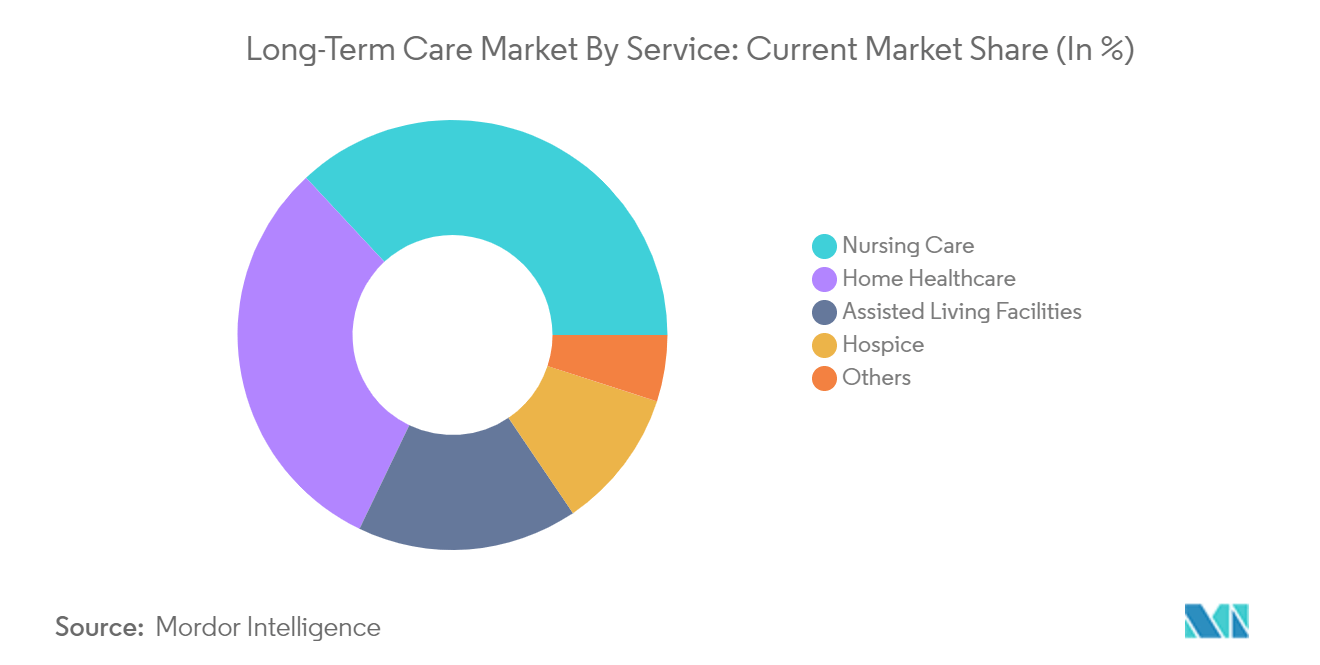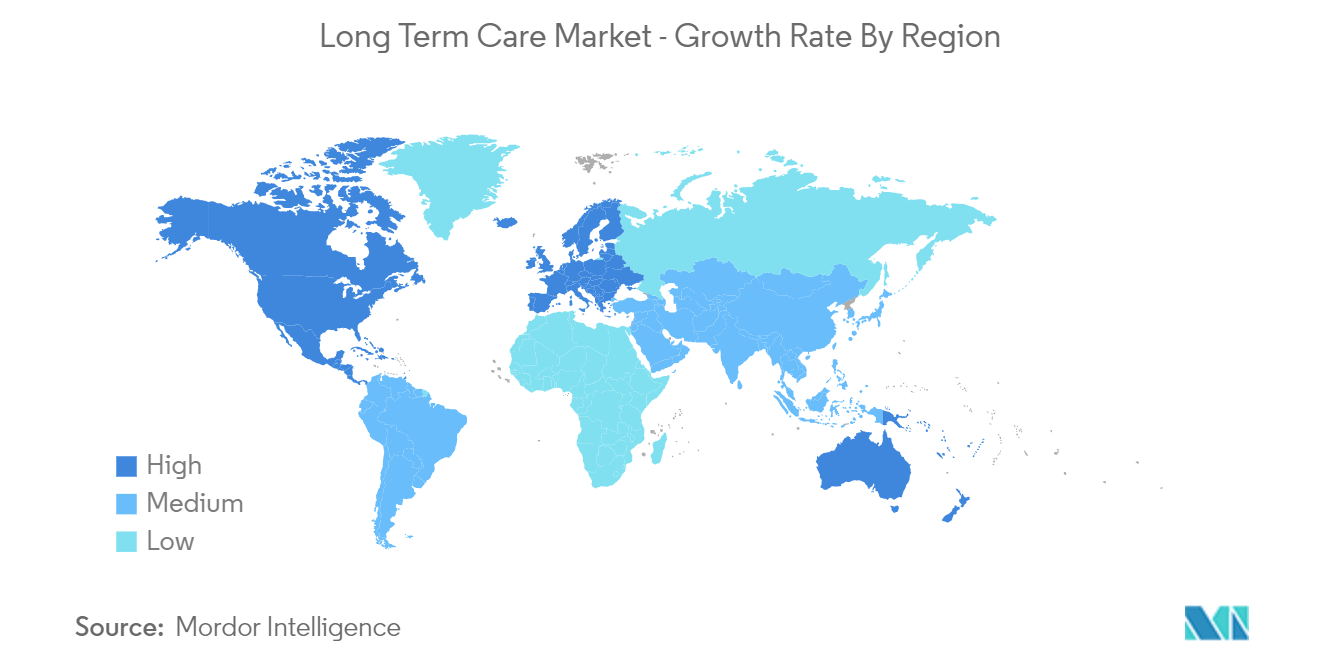Market Trends of Global Long Term Care Industry
Nursing Care: Backbone of Long-Term Care Services
Segment Overview: Nursing care remains the bedrock of the Long-Term Care Market, accounting for nearly 37% of the market's total value. It includes a range of medical and personal care services provided by skilled nurses in diverse environments, including Nursing Homes and specialized care facilities. The aging population and the increasing prevalence of chronic conditions are fueling the demand for specialized nursing care, reinforcing its foundational role in the sector.
Growth Drivers: The aging global population, particularly in developed countries, is the key driver for nursing care services. Medical advancements are enabling more complex procedures to be performed in nursing care settings, widening the scope of care. Additionally, the rising incidence of chronic diseases, including cognitive disorders, is intensifying the demand for nursing care. The move towards person-centered care is transforming how services are delivered, ensuring that care is tailored to individual needs and enhancing overall patient well-being.
Competitive Landscape: Market players in nursing care are innovating to remain competitive. Strategies include staff training, retention programs, and the integration of technology such as telemedicine and EHRs to improve efficiency. Furthermore, care facilities are focusing on creating more homelike environments to enhance patient satisfaction. As the segment faces increasing competition from Home Care models, providers must remain adaptable and continue to refine their service offerings to meet evolving patient and regulatory needs.

Europe: Pioneering Growth in the Global Long-Term Care Landscape
Market Dynamics: Europe, particularly the United Kingdom, is a leader in the global Long-Term Care Market, experiencing a CAGR of 7.44% between 2024 and 2029. The continent's rapid market growth is supported by aging demographics, progressive healthcare policies, and a rising demand for personalized care. Government initiatives such as the European Care Strategy are also contributing to the region's market expansion, enhancing both access to care and working conditions for caregivers.
Growth Drivers: Europe's aging population, with over 21% of its citizens aged 65 and above, is driving demand for Long-Term Care Services. Comprehensive social welfare systems, such as Germany's mandatory Long-Term Care Insurance, are enabling easier access to care. Moreover, advances in telemedicine and remote monitoring technologies are supporting the shift towards more personalized care services, further accelerating market growth across the region.
Competitive Landscape: In response to increasing demand, European Long Term Care Providers are leveraging technology and personalized care approaches to maintain a competitive edge. Investments in specialized care facilities, particularly for dementia and other cognitive disorders, are on the rise. Companies are also focusing on workforce development to meet the growing demand for skilled care professionals. Additionally, the expansion of Home Care services is shaping competitive strategies as providers cater to the growing preference for aging in place.


